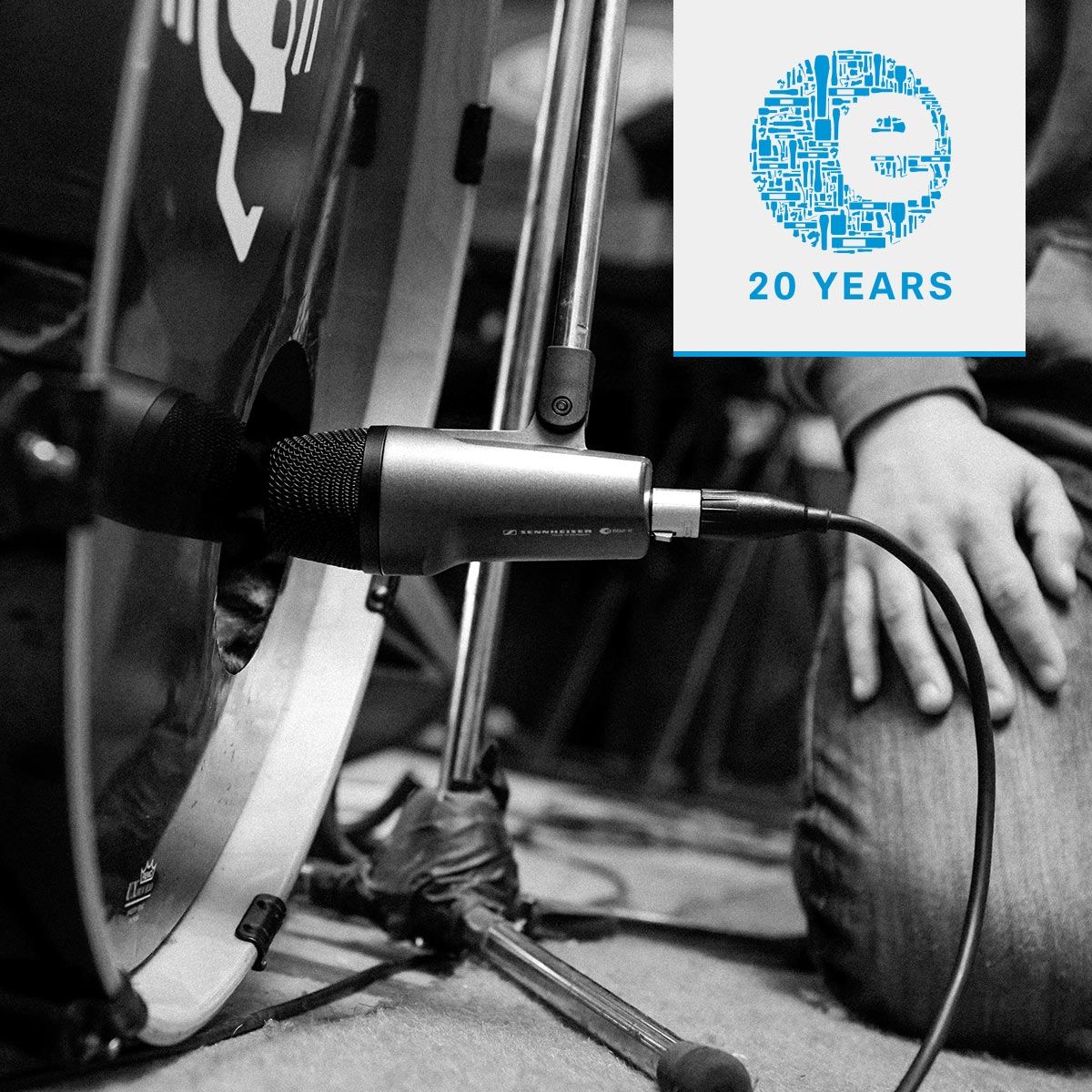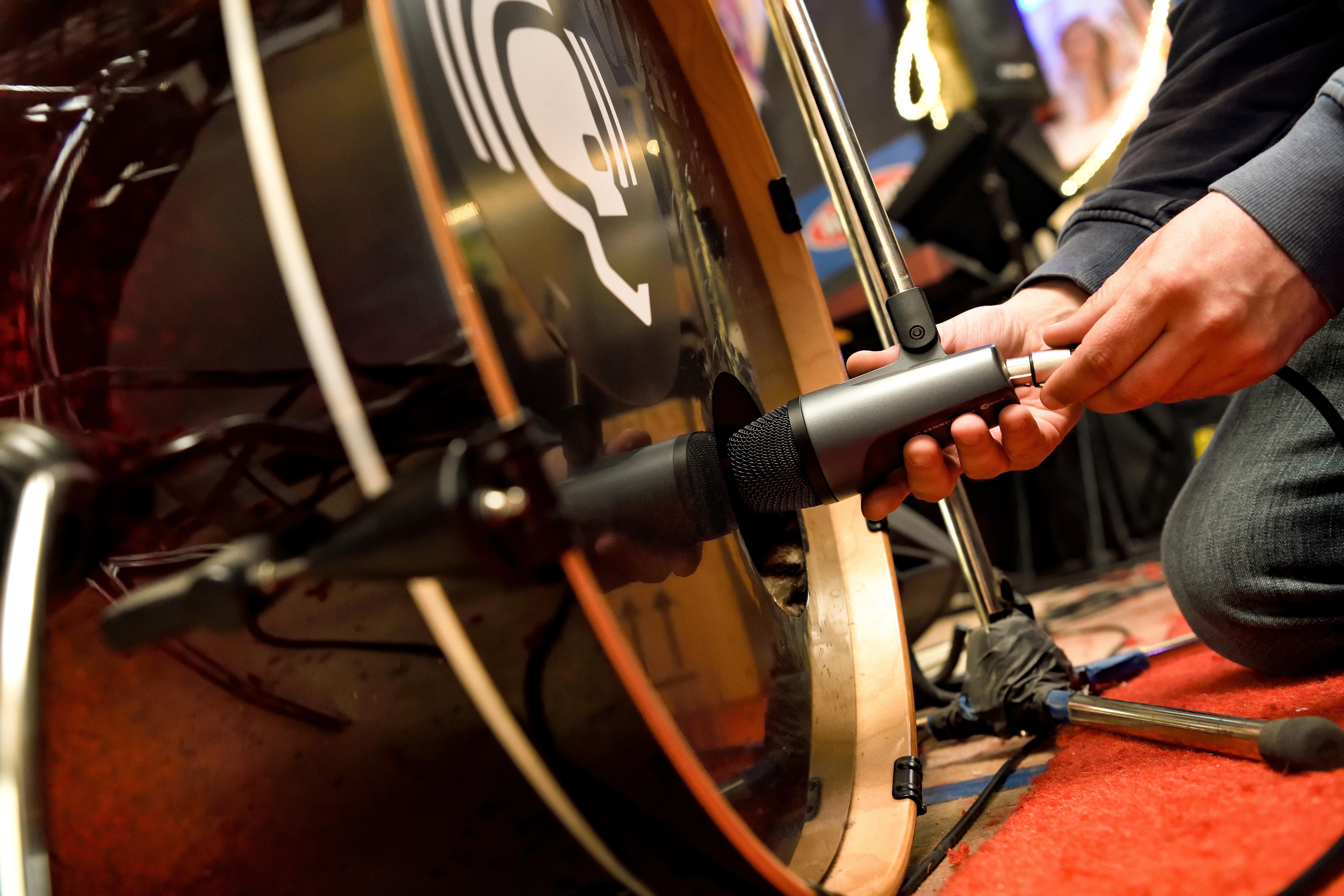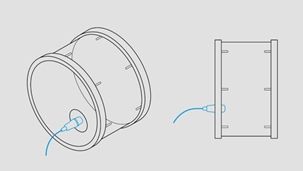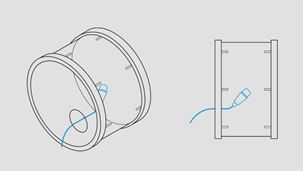Designed for kicks: The e 602-II bass drum microphone

The evolution e 602-II is Sennheiser’s “Mic of the Month” for December
Wedemark, 1 December 2018 – With the e 602-II, Sennheiser’s Mic of the Month for December (happyevolution.com), drummers simply get more out of their kick drum: bass sounds with more punch, more precise attack and more transparent high frequencies. “There was this trend to ask for a more ‘modern’ sound from the kick drum; that is to say more resolution, greater openness and a fuller range of sound,” remembers Sebastian Schmitz, Sennheiser portfolio manager.
On the desk in front of Sebastian Schmitz, two additional microphones are lying next to the e 602-II: an e 602 and an MD 421. “Without these two, the e 602-II wouldn’t exist.” He receives inquiring looks and further explains: “You see, specialist microphones for capturing the sound of kick drums are still in their relative infancy. They didn’t come about until the mid-1980s. Before this, the miking of kick drums was usually done with all-round microphones – both in the studio and for live productions,” explains Schmitz. “One of these was our MD 421, which produced very good results.” This is not surprising – after all, the MD 421 is still regarded as one of the most versatile microphones in the world.
“When developing the evolution series, we then also designed a specialized kick drum microphone – the e 602 – into which we incorporated the tried-and-tested transducer from the MD 421. This was an obvious thing to do,” continues Sebastian Schmitz. However, to adapt it better to its task, the frequency response of the e 602 was pre-formed to a greater degree than was the case with the MD 421. This made it possible to reproduce more deep bass sounds on the one hand and more powerful attack on the other.

Fashions change in sound perception too
“With the e 602, then, we had our first dedicated kick drum microphone and it was ideally suited to the stage,” explains Schmitz, “but there were two factors which prompted us to develop things further: the costs for our customers and their preferred sound esthetics.”
Indeed, as part of the 600/800 series – known for being outstanding value for money – the e 602 was still relatively expensive. This was because its transducer was, as with the MD 421, made by hand, whilst the capsules of the other evolution microphones were already being made using automated processes in Wedemark, Germany. The engineers therefore designed a completely new transducer that could be manufactured on the highly precise automated production line – and could thus be offered more cheaply but without sacrificing any quality.
“Where the sound is concerned, we have given the frequency response of the new e 602-II even more contours and accents,” explains Schmitz. This becomes clear from its elevation which starts as soon as 50 Hz, resulting in even richer deep bass tones and a significantly expanded elevation at 2 - 15 kHz. But why aim for this particular response? “Talking to musicians and sound engineers, we had found out that with bass microphones, greater transparency was now required.” This was firstly due to the ever-increasing diversity of musical styles, and secondly to a general shift in terms of auditory perception: “It was clearly noticeable that sound esthetics had moved on, like a fashion,” recalls Schmitz.
The subsequent field tests showed that the new e 602-II could provide the desired modern kick drum sound effortlessly. Even without the intervention of the EQ, it already offered a balanced sound whose carefully coordinated frequency graduation helped the entire rhythm section to achieve a harmonious presence.
“As a result, the e 602-II is – particularly on small- to medium-sized stages – an excellent choice for kick drums. With extremely deep bass sounds it delivers noticeably more volume, provides precise attack across the entire frequency range and supplies the desired transparency in the high frequencies,” concludes Sebastian Schmitz.
Preserving what has been tried and tested
Alongside the changes, the e 602-II has also retained many key things from its predecessor, the e 602, such as the robust aluminum housing. Thanks to its low weight, it can also be positioned easily and securely on widely extended microphone booms. What is more, it is magnetically shielded, in order to reliably filter out potential sources of interference.

Tips to upgrade your e 602-II sound
With the e 602-II you capture the distinctive quality of your kick drum – and more besides. Here you can find out how to position the microphone so as to match your style as well as some unusual tips for use.
Position 1: Deep in the drum in front of the batter head

The position deep in the bass drum just a few finger widths away from the batter head particularly emphasizes the impact and blocks out a lot of resonance. The sound tends to be dry.
Position 2: Microphone at the level of the resonant head

The position at the front, in the opening of the resonant head, delivers less attack, but instead lots of resonance and a warm, voluminous bass sound.
Position 3: The power lies in the center

The position in the center between the batter head and resonant head still provides a voluminous bass sound but less attack. The emphasis of the attack can be further reduced by turning the e 602-II away from where the beater strikes.
The e 602-II can do that too?
Even if it was specially developed for the kick drum, the e 602-II is not limited to this purpose.
For example, we have heard that it is also being used for voice recordings – particularly in cases where people want to make their voice bigger, fuller and more sonorous. Apparently, this is a quality that really makes a podcast stand out.
In addition, the e 602-II appears to also be popular among some guitar players. For example, it has been seen with gothic metal bands, where musicians want to give the guitar sound a certain heaviness with emphasis on the low ranges.
And there are doubtless even more ways – unusual ways – of using the microphone, which is why our recommendation is always the following: Searching for the right microphone, there’s nothing better than to try out, try out and try out once again.
You can find e 602-II tutorial videos at: https://www.youtube.com/watch?v=jGTzkZN7S2o (for miking the bass amp) and https://www.youtube.com/watch?v=z40_nccF6Jk (for miking the kick drum).


